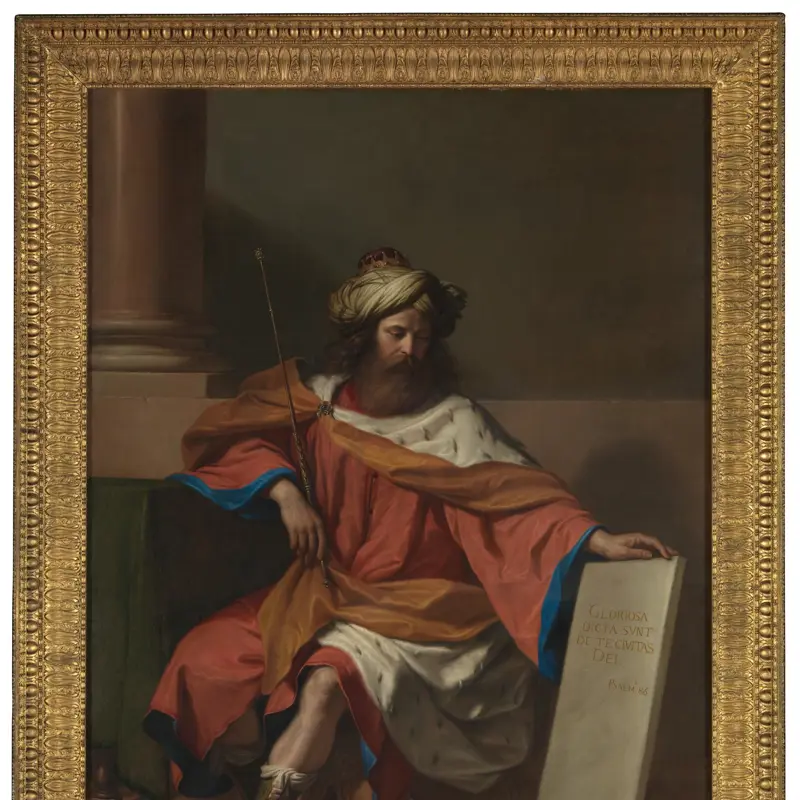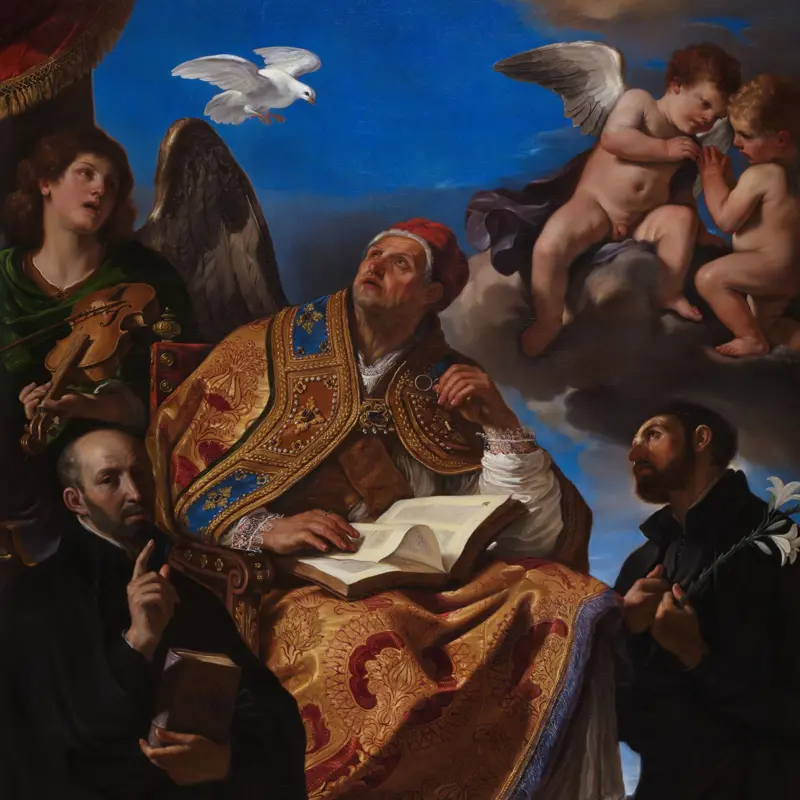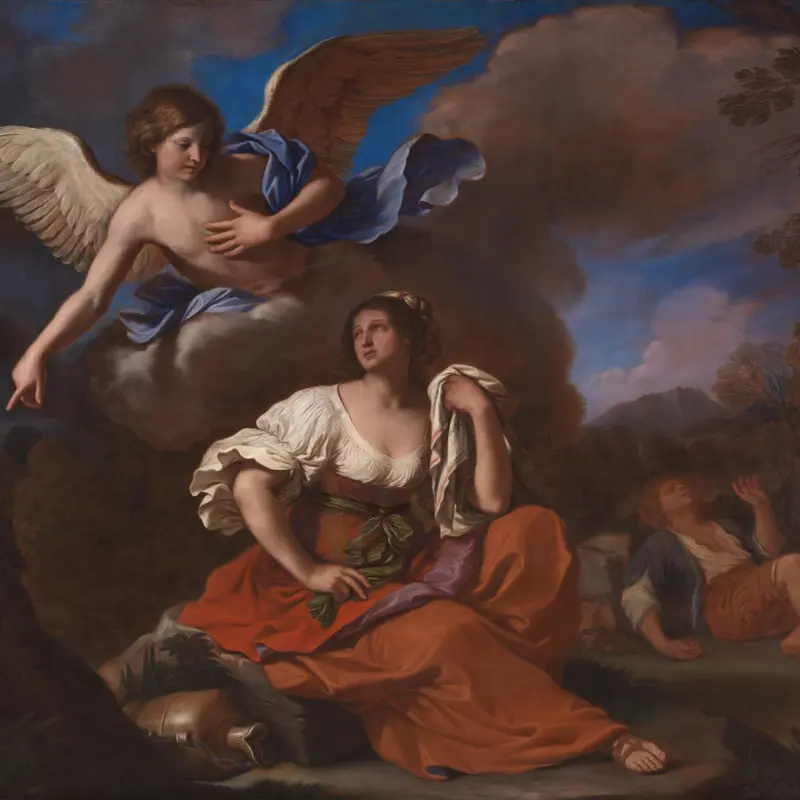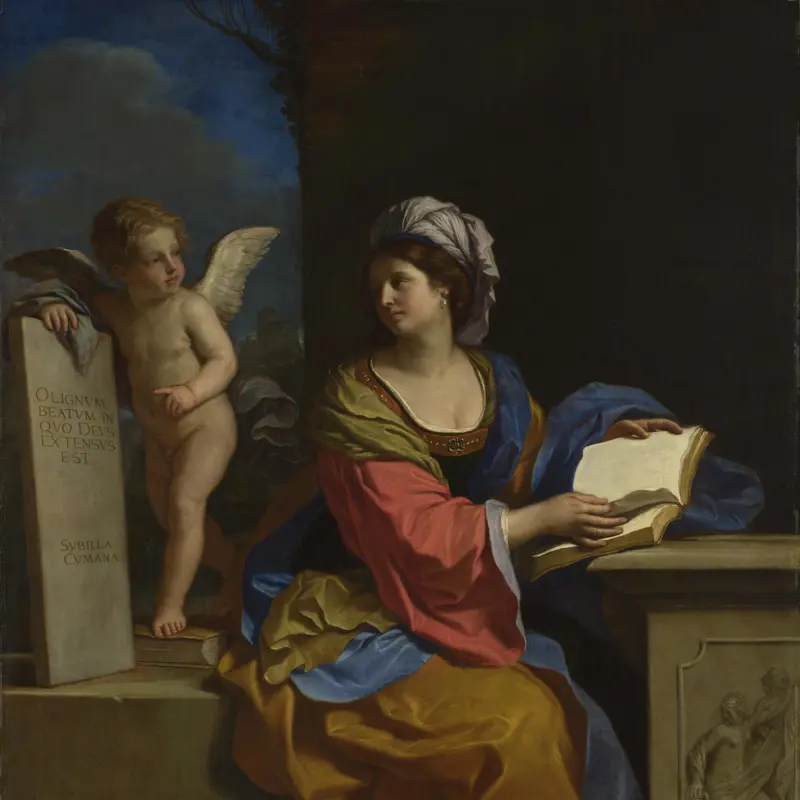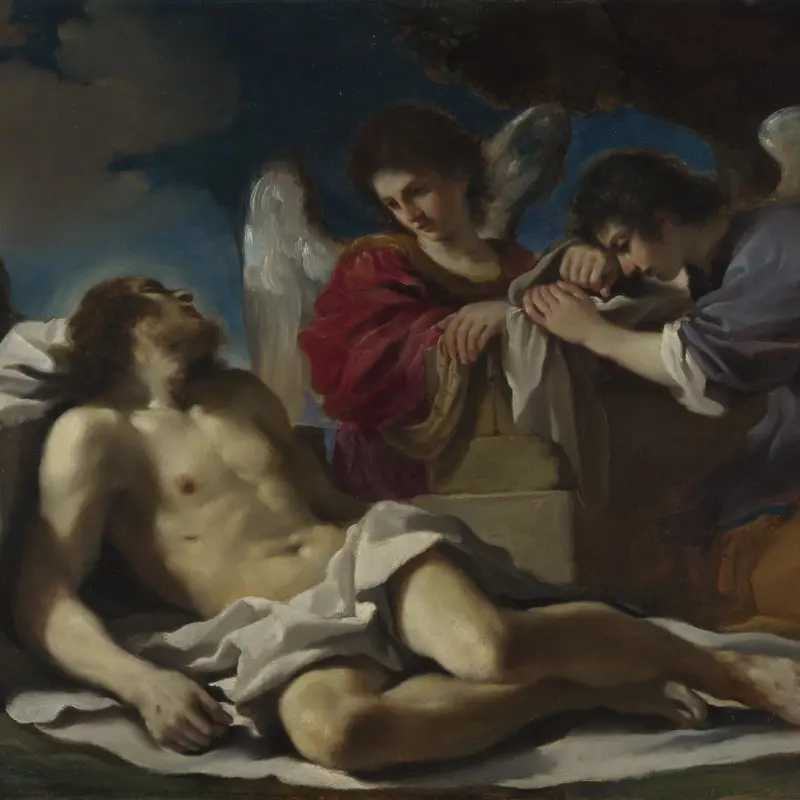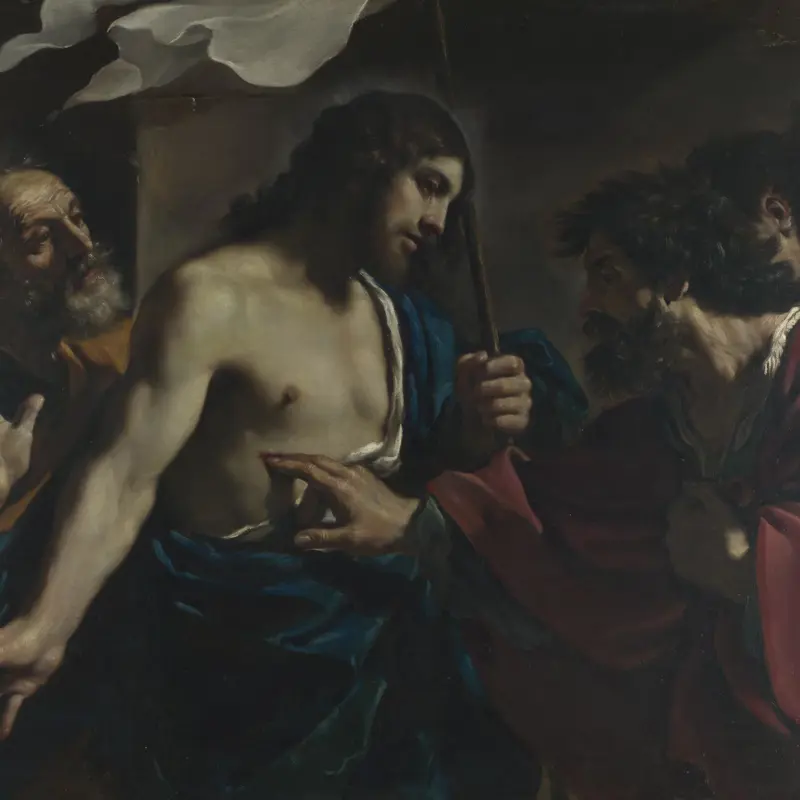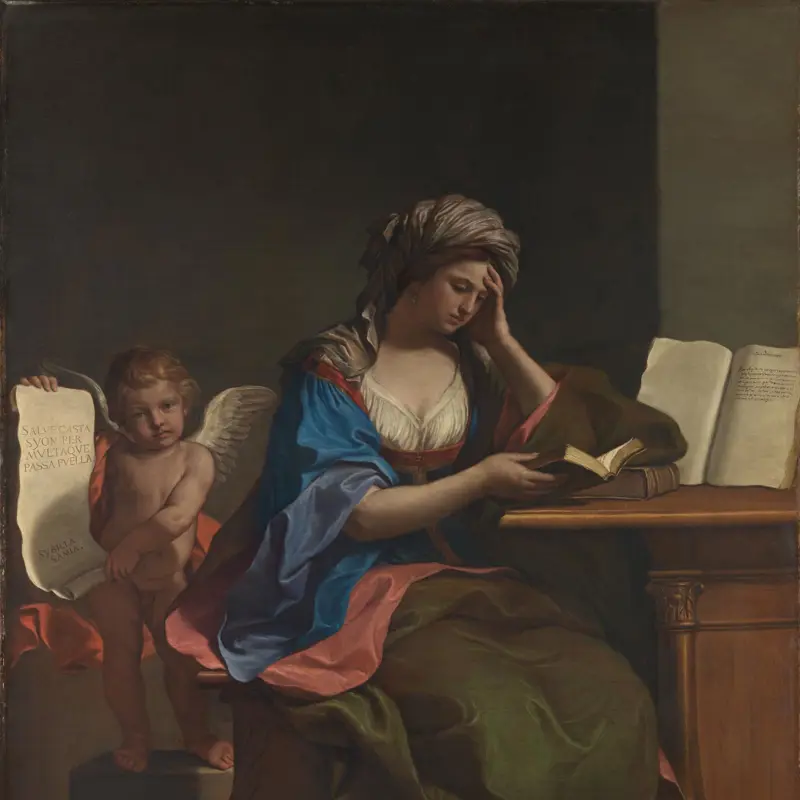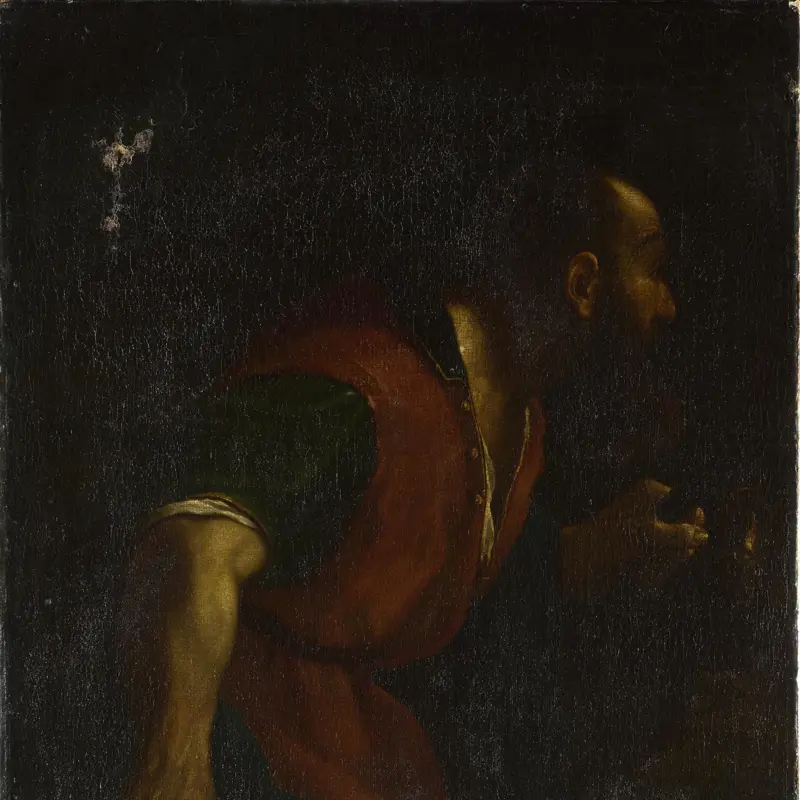Guercino, 'The Presentation of Jesus in the Temple', 1623
About the work
Overview
Forty days after his birth, Mary and Joseph brought the infant Christ to the Temple in Jerusalem. According to Jewish custom, all first-born male children were to be taken to the Temple to be presented to God in a ceremony that involved the sacrifice of two doves or pigeons, visible here at the foot of the altar. The elderly seated figure is the high priest Simeon. The Gospel of Luke says that the Holy Ghost had told Simeon he would not die until he had seen the Messiah. Guercino portrays the moments preceding the story’s climax, as the aged Simeon is about to hold Christ and, in recognising him, fulfil his destiny.
This work was painted for Bartolomeo Fabri, one of Guercino’s early patrons, who lived in the artist’s native Cento. It was returned to Guercino in settlement of a debt, and he kept it by his bedside until he was eventually persuaded to sell it in 1660.
Key facts
Details
- Full title
- The Presentation of Jesus in the Temple
- Artist
- Guercino
- Artist dates
- 1591 - 1666
- Date made
- 1623
- Medium and support
- oil on copper
- Dimensions
- 72.5 × 65 cm
- Acquisition credit
- Bequeathed by Sir Denis Mahon CH CBE FBA, 2011; entered the Collection, 2013
- Inventory number
- NG6646
- Location
- Room 26
- Collection
- Main Collection
- Previous owners
- Frame
- 17th-century Italian Frame
Provenance
Additional information
This painting is included in a list of works with incomplete provenance from 1933–1945; for more information see Whereabouts of paintings 1933–1945.
Text extracted from the National Gallery’s Annual Report, ‘The National Gallery: Review of the Year, April 2012 – March 2013’.
Bibliography
-
1678C.C. Malvasia, Felsina pittrice: Vite de' pittori bolognesi, Bologna 1678
-
1727L.D. de Saint-Gelais, Description des tableaux du Palais Royal: Avec la vie des peintres à la tête de leurs ouvrages: Dédiée à Monseigneur le duc d'Orleans, premier prince du sang, Paris 1727
-
1745A.-J. Dézallier d'Argenville, Abrégé de la vie des plus fameux peintres, Paris 1745
-
1749A.-N. Dézallier d'Argenville, Voyage pittoresque de Paris, ou, Indication de tout ce qu'il y a de plus beau dans cette grande ville, en peinture, sculpture, & architecture, Paris 1749
-
1762A.-J. Dézallier d'Argenville, Abrégé de la vie des plus fameux peintres, nouv. éd, Paris 1762
-
1808J.A. Calvi, Notizie della vita e delle opere del Cavaliere Gian Francesco Barbieri detto il Guercino da Cento, Bologna 1808
-
1824W. Buchanan, Memoirs of Painting: With a Chronological History of the Importation of Pictures by the Great Masters into England Since the French Revolution, London 1824
-
1884E. Bonaffé, Dictionnaire des amateurs français au XVIIe siècle, Paris 1884
-
1947D. Mahon, Studies in Seicento Art and Theory, London 1947
-
1953G. Briganti, 'The Mahon Collection of Seicento Paintings', The Connoisseur, CXXXII, 1953, pp. 4-18
-
1968D. Mahon, Il Guercino: Catalogo critico dei dipinti (exh. cat. Palazzo dell'Archiginnasio, 1 September - 18 November 1968), Bologna 1968
-
1988L. Salerno, I dipinti del Guercino, Rome 1988
-
1989D. Mahon CH CBE FBA and N. Turner, The Drawings of Guercino in the Collection of Her Majesty the Queen at Windsor Castle, Cambridge 1989
-
1991D.M. Stone, Guercino: Catalogo completo dei dipinti, Florence 1991
-
1991M. Helston et al., 'Guercino in Britain: Paintings from British Collections', The Burlington Magazine, CXXXIII/1060, 1991, pp. i-iv, 1-68
-
1991M. Helston et al., Guercino in Britain: Paintings from British Collections (exh. cat. The National Gallery, 28 June - 31 July 1991), London 1991
-
1991D. Mahon, Giovanni Francesco Barbieri, Il Guercino, 1591-1666 (exh. cat. Museo civico archeologico, 6 July - 10 November 1991; Schirn Kunsthalle, 2 December 1991 - 9 February 1992; National Gallery of Art, Washington, 15 March - 17 May 1992), Bologna 1991
-
1994A. Schnapper, Curieux du Grand Siècle: Collections et collectionneurs dans la France du XVIIe siècl, Paris 1994
-
1997G. Finaldi et al., Discovering the Baroque: The Denis Mahon Collection (exh. cat. The National Gallery, 26 February - 18 May 1997), London 1997
-
2001
C. Baker and T. Henry, The National Gallery: Complete Illustrated Catalogue, London 2001
-
2004D. Mahon et al., Guercino: Poesia e sentimento nella pittura del'600 (exh. cat. Palazzo Reale (Milan), 27 September 2003 - 18 January 2004), Milan 2004
-
2014National Gallery, The National Gallery: Review of the Year, April 2012 - March 2013, London 2014
About this record
If you know more about this work or have spotted an error, please contact us. Please note that exhibition histories are listed from 2009 onwards. Bibliographies may not be complete; more comprehensive information is available in the National Gallery Library.


